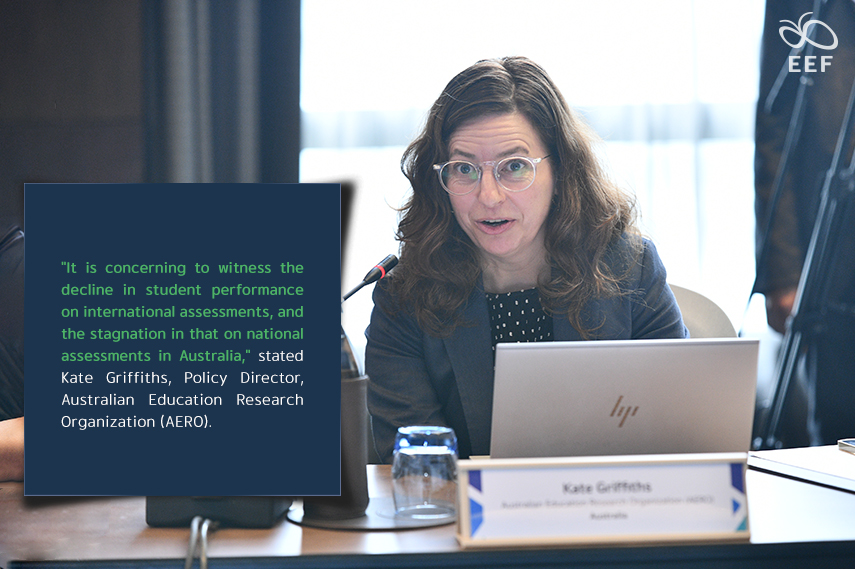
“It is concerning to witness the decline in student performance on international assessments, and the stagnation in that on national assessments in Australia,” stated Kate Griffiths, Policy Director, Australian Education Research Organization (AERO) as she took the stage, kicking off her talk “Evidence-Based School and Classroom Practice” at the 6th Meeting of Equitable Education Alliance: Exercising Equity to Deliver An Inclusive Classroom on February 7th, 2023.
The policy director, having made a strong opening statement, backed it up with a string of data from PISA and NAPLAN that showed a worrying trend in student achievement; PISA data reveals that Australia’s students have seen a significant decrease in their achievement in both reading and mathematics over time. Despite not demonstrating quite the same drop as the former, NAPLAN — Australia’s national assessment program for students in years three, five, seven, and nine — does reveal an alarming number of students who are at or below national minimum standards. Unquestionably, this data points to the widening of educational equity gaps in the country — a problem that cannot be ignored.
Although there may also be a variety of other factors collectively impacting student achievement, instructional quality still remains an essential factor in improving student performance and should, therefore, remain a primary focus to address the educational challenges faced by the country. Because of this, Griffiths suggested teaching quality be focused on in order to ensure that all students receive the best instruction possible across all classrooms and schools. To this end, it requires teachers to have additional support to understand how to teach for optimum impact.
With that being said, despite compelling data demonstrating which teaching practices have been proven to make a positive difference, implications for teaching are not always well understood or put into practice in schools. The policy director cited a 2021 survey conducted by AERO back in 2021 that revealed a very concerning reality: While many teachers reported often using effective teaching practices, 71% of them also reported using strategies that had not been proven to be effective for student learning in most or every lesson. This highlights the urgent need for Australia to find ways to improve learning outcomes for all students, regardless of their individual contexts, which is what Evidence-Based School and Classroom Practice is making the case for in the Science of Learning. It is a project that serves as a foundation piece for the organization to raise educational outcomes for all students.
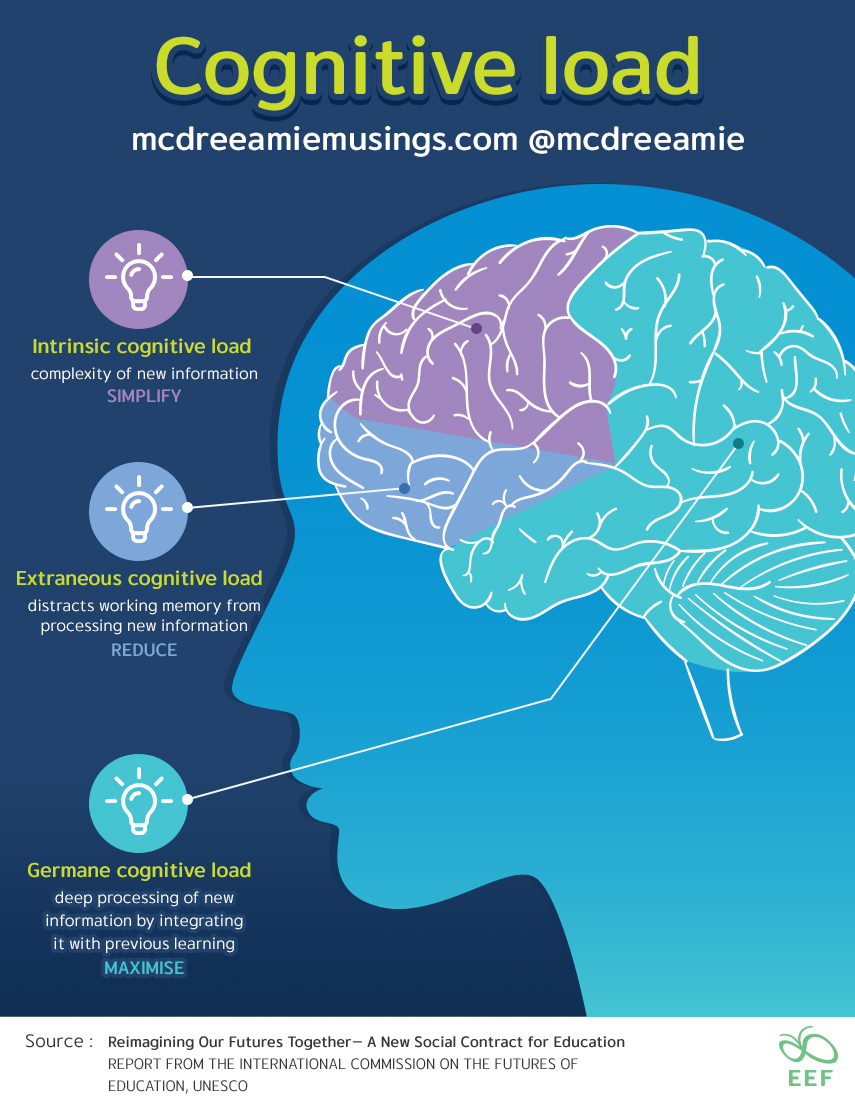
Cognitive science, particularly cognitive load theory, has offered research-backed knowledge on how the brain learns and which teaching techniques work best for students. And the evidence is clear: there are certain practices that benefit all students, including
Cognitive Scientific Research-Backed Practices That Benefit All Students
- Sequencing Learning, enabling students to draw on their prior knowledge to make learning easier and more engaging;
- Tasting Instruction with Modeling and Examples, enabling students to rely less on their working memory; and
- Classrooms with a Focus on Learning Routines, enabling students to develop positive dispositions for learning.
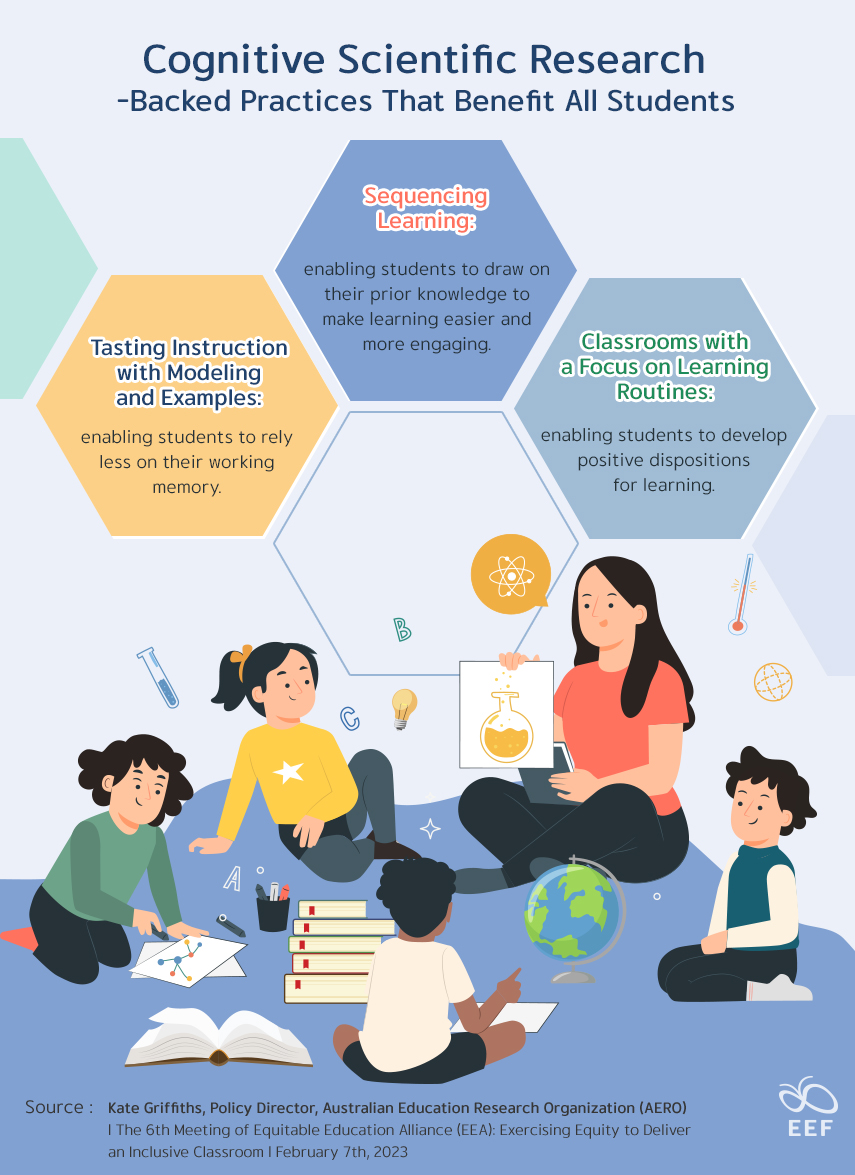
This is where the project comes into play: It seeks to advance the implementation of evidence-based teaching practices informed by the science of learning. Griffiths argued that this presents 2 opportunities: one for practitioners, including teachers and leaders in schools, to build awareness and gain a greater understanding of how students learn and how it can affect teaching practices; and the other for policymakers — how to incorporate evidence-based teaching practices into strategies and policies for schools and for teachers, building on what the science says about how students learn.
And to tackle the arising opportunities, the policy director shared that AERO has produced a series of Tried and Tested Guides that outline what it knows so far. These materials, along with additional resources like case studies or implementation guides, demonstrate evidence-based teaching practices that have been not only backed by a significant body of evidence but also been tried and tested in a variety of contexts and proven relevant to apply to different subjects and year levels and significantly improve student learning. The current selection of Tried and Tested Guides from AERO include
- Formative Assessment — to know where students are in their learning;
- Explicit Instruction — to know how to teach students;
- Mastery Learning — to know how to make sure your students learn;
- Focus Classroom — to know how to manage the classroom to maximize learning, and
- Spacing and Retrieval Practice — to know how to improve students for long-term retention of learning.
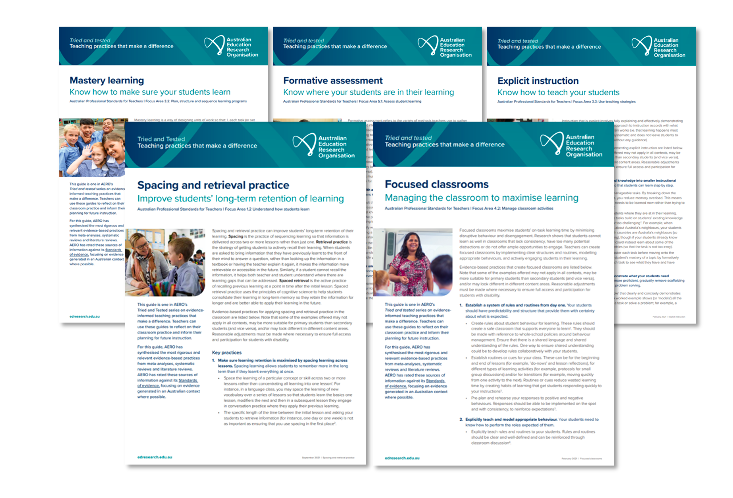
Griffiths capped off her talk by emphasizing AERO’s commitment to providing comprehensive guidance on evidence-based practices for students and evidence-based models of teaching and learning for teachers, leaders, and systems, so that policymakers understand the practical implications of such practices — how to apply them for maximum impact on student learning outcomes. In doing so, she argued that there are five approaches:
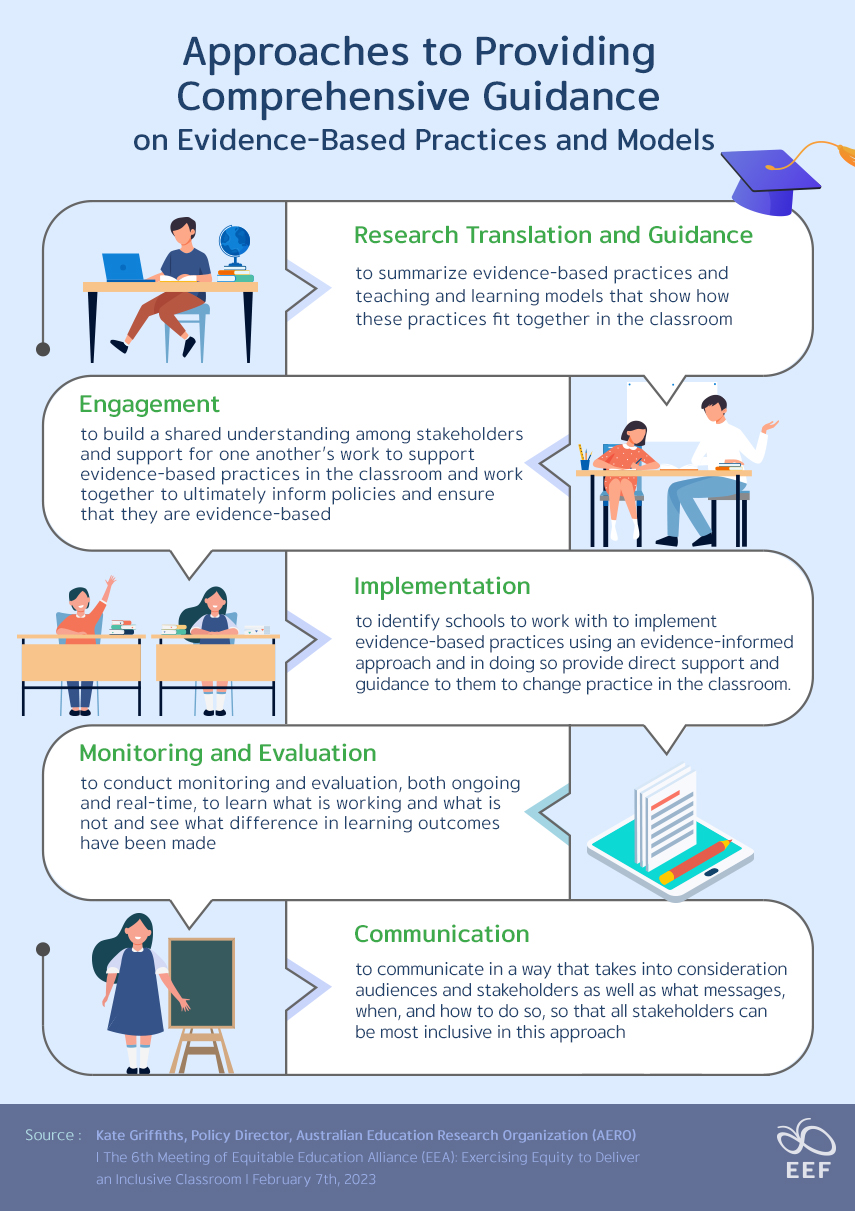
Approaches to Providing Comprehensive Guidance on Evidence-Based Practices and Models
- Research Translation and Guidance — to summarize evidence-based practices and teaching and learning models that show how these practices fit together in the classroom
- Engagement — to build a shared understanding among stakeholders and support for one another’s work to support evidence-based practices in the classroom and work together to ultimately inform policies and ensure that they are evidence-based
- Implementation — to identify schools to work with to implement evidence-based practices using an evidence-informed approach and in doing so provide direct support and guidance to them to change practice in the classroom
- Monitoring and Evaluation — to conduct monitoring and evaluation, both ongoing and real-time, to learn what is working and what is not and see what difference in learning outcomes have been made
- Communication — to communicate in a way that takes into consideration audiences and stakeholders as well as what messages, when, and how to do so, so that all stakeholders can be most inclusive in this approach
Australian Education Research Organization (AERO) is Australia’s independent education evidence body, which was established in April 2021 with a scope of responsibility extending from early childhood education to the conclusion of year twelve. Its vision is to ensure excellence and equity in educational outcomes for all children and young people through the effective application of evidence. And in support of this vision, it not only generates and translates high-quality evidence for ease of use but also embeds it into practice and policy.
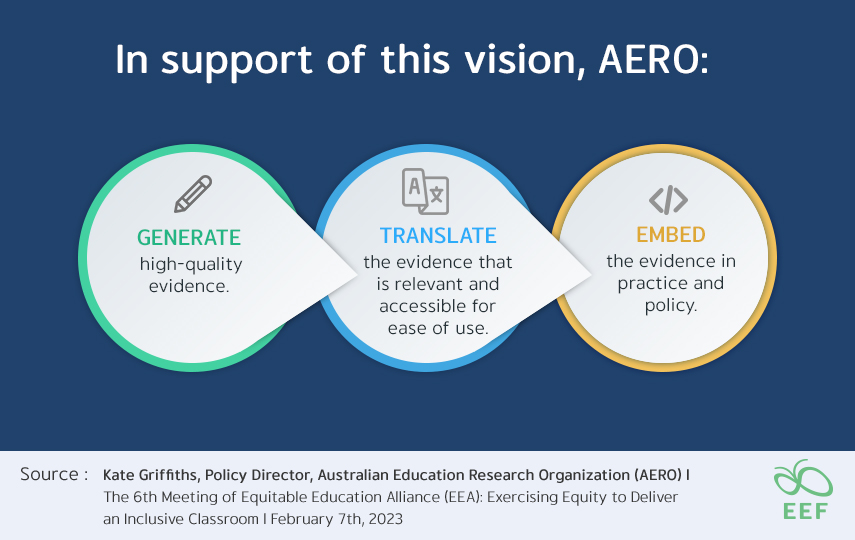
In support of this vision, AERO:
– GENERATE high-quality evidence
– TRANSLATE the evidence that is relevant and accessible for ease of use
– EMBED the evidence in practice and policy.
This is in line with the Equitable Education Fund (EEF) Thailand’s strategy which created a quality evidence base that can represent research, area base education models, support persons in need, and be able to advocate at the policy level for better equitable education for all.
Source:
- Record of meeting – The 6th Meeting of Equitable Education Alliance (EEA): Exercising Equity to Deliver an Inclusive Classroom
- Equitable Education Alliance – Equity ED Hub
- Kate Griffiths, Policy Director, Australian Education Research Organization (AERO) l The 6th Meeting of Equitable Education Alliance (EEA): Exercising Equity to Deliver an Inclusive Classroom l February 7th, 2023

